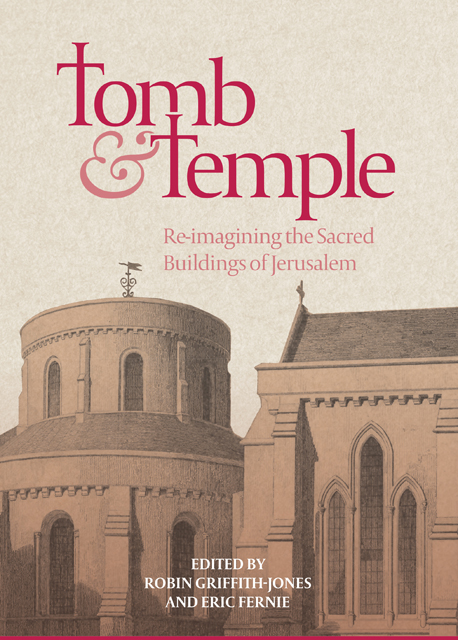Book contents
- Frontmatter
- Contents
- Illustrations
- Preface
- Contributors
- Abbreviations
- Editors’ Note
- Introduction
- Part I Re-presenting Jerusalem
- Part II The Church of the Holy Sepulchre
- Part III The Noble Sanctuary / The Temple Mount
- Part IV The Orthodox Churches
- Part V Round Churches in the West
- Appendix: The Knights’ Effigies: Newly Discovered Drawings by John Guillim, c. 1610
- Epilogue
- Index
- Already Published
1 - Public, Private and Political Devotion: Re-presenting the Sepulchre
Published online by Cambridge University Press: 17 January 2023
- Frontmatter
- Contents
- Illustrations
- Preface
- Contributors
- Abbreviations
- Editors’ Note
- Introduction
- Part I Re-presenting Jerusalem
- Part II The Church of the Holy Sepulchre
- Part III The Noble Sanctuary / The Temple Mount
- Part IV The Orthodox Churches
- Part V Round Churches in the West
- Appendix: The Knights’ Effigies: Newly Discovered Drawings by John Guillim, c. 1610
- Epilogue
- Index
- Already Published
Summary
Most of this volume will be dedicated to architectural and political history, in the designs, sculptures and patronage of buildings. In this opening chapter we will give some context to the architectural studies that follow, in a reminder of other forms – some far less grand and costly than the buildings, and far more widespread – in which the Holy Sepulchre and its relics were made pervasively present throughout Europe. We will see the ambiguities that inform these other representations, between the Jerusalems of earth and heaven, of past, present and future, of interior and exterior space.
This is a book of artistic rather than social history. Our focus will be largely (but not exclusively) on high-status buildings and artefacts, on their use, and on the ways in which they are likely to have guided, enriched and enlivened the liturgies and devotions of those who encountered them. How accessible and how often were these buildings and artefacts to people of what classes or education – and how much that ‘public’ mattered to the patrons – are questions underlying every page of the present chapter; and we will occasionally, here and later in the book, have good reason to articulate and address them. But on the page we will for the most part ask what the artefacts seem designed to effect or to make possible in unspecified individuals present ‘on their own’ within, before or in contact with them. At the book’s end, in the Epilogue, we will detach ourselves from these envisioned individuals and re-immerse them in the groups, crowds, processions and services in which priests and laity converged on Jerusalem, the earthbound version of the destination to which the elect were living out their lifelong pilgrimage.
The recovery – at the distance of many miles and centuries – of such sensibilities will never be more than tentative. Buildings, mosaics, reliquaries and oil-flasks do not speak for themselves. During the course of this chapter we will look at a handful of small objects, all linked more or less directly with the Holy Sepulchre and all seemingly designed to engage their users intensely; and we will ask if architectural recollections of the Sepulchre may have presupposed analogous sensibilities and offered analogous rewards.
- Type
- Chapter
- Information
- Tomb and TempleRe-imagining the Sacred Buildings of Jerusalem, pp. 17 - 48Publisher: Boydell & BrewerPrint publication year: 2018

